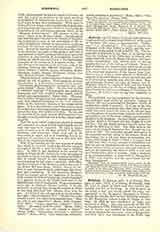

Kirkwall, a parish, also a royal and parliamentary burgh and chief or county town of Orkney, in the north of Scotland (the name is Scandinavian, “Kirkju-vagr”, i.e. “church-bay”). The original church was dedicated to St. Olaf (killed in 1033), and the landward part of the parish is still called St. Ola. The importance of Kirkwall is due, first, to its having long been the residence of the Norse earls of Orkney, who, while nominally under the Kings of Norway, were practically independent; and, second, from its having become the seat of the bishops of Orkney. Magnus, Earl of Orkney, was treacherously killed by his cousin Haco about 1115; and his nephew Ronald undertook, if he recovered possession of the islands from Paul, Haco’s son, to build a stone minster at Kirkwall in memory of his uncle Magnus, whose sanctity was said to be attested by miracles soon after his death. Ronald eventually became sole ruler of Orkney, and St. Magnus’s church was begun in 1137, and was constituted the cathedral of the See of Orkney, which had been founded in 1102 (as a suffragan of Trondhjem, in Norway), the bishop’s seat having been originally at Birsa.
The cathedral was not completed by the founder, but additions were made by successive bishops of Orkney, this fact accounting for the great variety of architecture which it presents. It is one of the two ancient Scottish cathedrals (the other being Glasgow) which have been preserved entire to the present day; and, though not of any great size, remains, both within and without, one of the most striking and impressive churches in the kingdom. Its total length (outside) is 234 feet, width of transepts 101 feet, height of tower 133 feet. The tall steeple surmounting the tower was struck by lightning in 1671. The three bells in the tower are all of pre-Reformation date, though one was recast in 1682. The cathedral escaped destruction in the sixteenth century, owing to the zealous efforts of the bishop; but it fell into decay in succeeding centuries, there being no funds to keep it in repair, until in 1805 and 1845 a certain amount of restoration was done by private benefactors and by the Government. Many ancient tombs of former earls and bishops remain in the cathedral, the choir of which is now used as a Presbyterian place of worship. Only a fragment of the episcopal palace—a tower built by Bishop Reid in 1540—now remains, and the earl’s castle has entirely disappeared.
D. O. HUNTER-BLAIR

